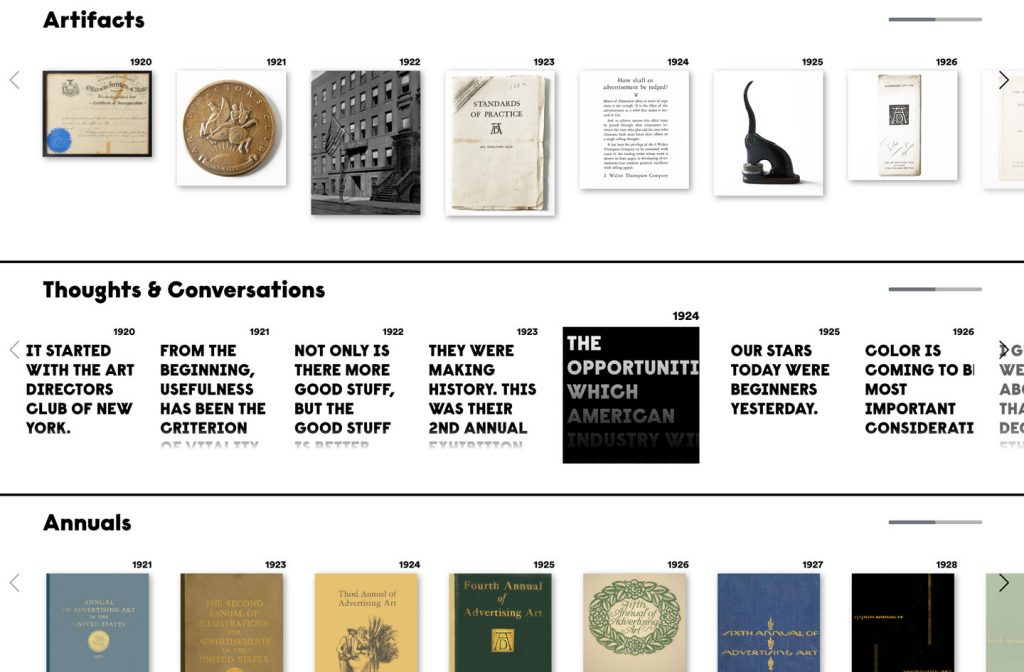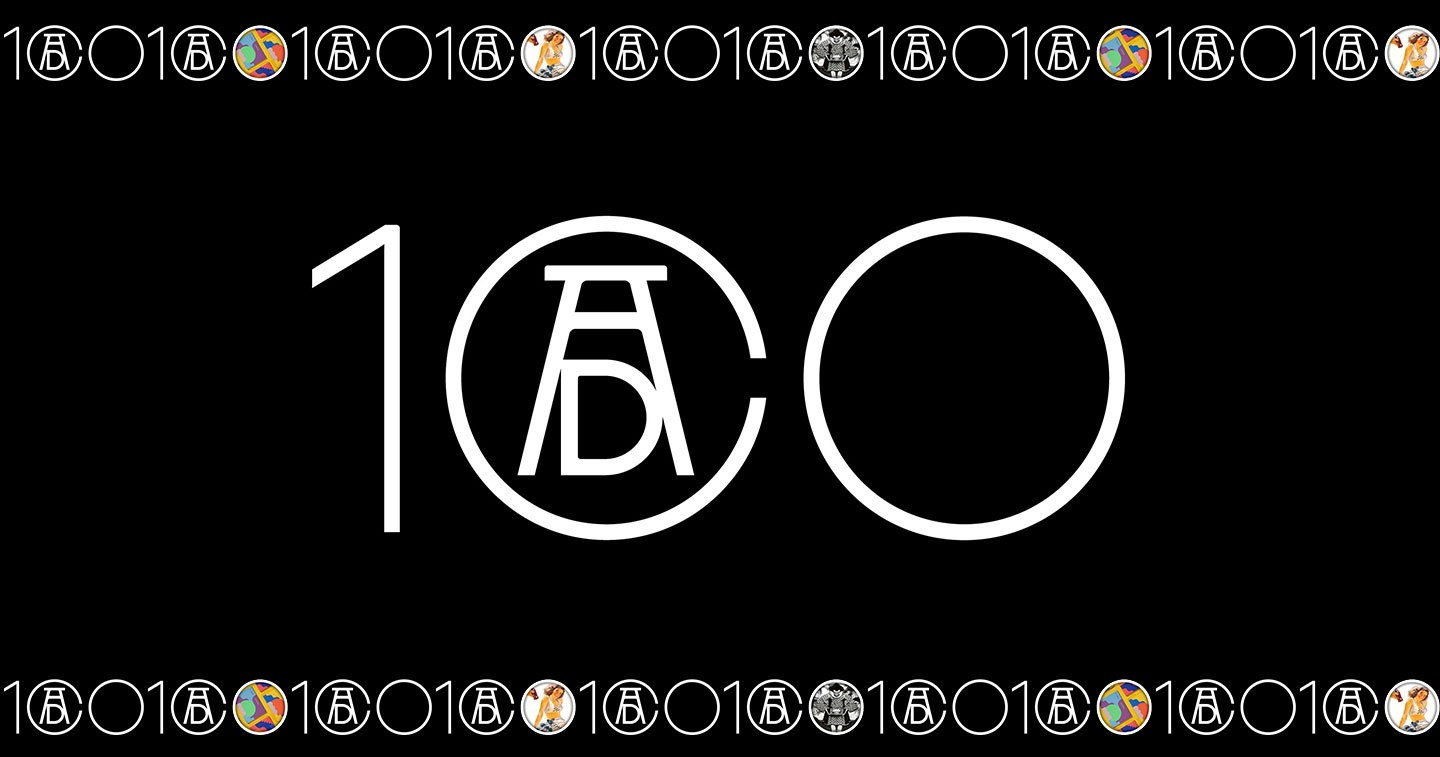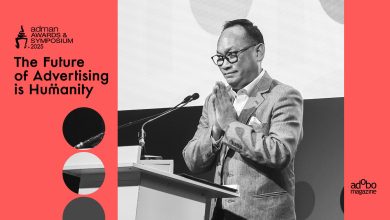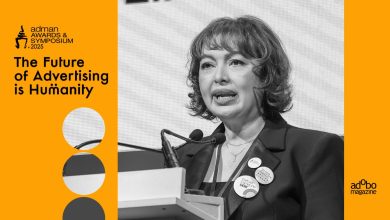NEW YORK— On the 100th anniversary date of the incorporation of the Art Director Club of New York, The One Club for Creativity today launched a year-long ADC100 centennial celebration, kicked off with a special identity and online historic timeline developed by multi-specialty creative studio C&G Partners, New York.
The ADC100 program will provide rare insights into the observations and human exchanges of the creative community throughout the past century. Serialized monthly content will trace the history of ADC, and by extension tell the story of how the design and advertising professions evolved during major global events including recessions, world wars and shifts in consumer lifestyles.
The Art Directors Club, known as ADC, was the first global organization to celebrate and award leaders in creative communications. Founded in New York by Louis Pedlar on August 13, 1920, the club was established to ensure advertising was judged by the same stringent standards as fine art.
ADC organized the first juried exhibition of advertising art in 1921 to, in the words of ad and design legend Earnest Elmo Calkins, “dignify the field of business art in the eyes of artists” and communicate that “artistic excellence is vitally necessary to successful advertising.” The ADC Annual Awards is the world’s longest continuously running awards program recognizing global excellence in craft and innovation in all forms of design and advertising.
ADC, whose honorees throughout history include iconic figures such as Andy Warhol and Walt Disney, merged with The One Club for Art & Copy in 2016 to form The One Club for Creativity, the world’s foremost nonprofit organization supporting the global creative community. The merger was a reunion of sorts: The One Club began as The Copy Club, which originally grew out of the ADC, and the two organizations co-produced creative awards programs in the 1970s.
ADC100 Identity
Leveraging its extensive experience in creating corporate and organization anniversary programs, C&G Partners developed the ADC100 identity and a suite of projects to celebrate the centennial over the next 12 months.
The ADC100 identity is what the studio calls a “hijack logo”, where a temporary variation on the usual mark takes over completely, everywhere, for the duration of the celebration year. The circular “C” in the ADC logo also represents the Roman numeral for 100, hidden in plain sight as if waiting for its centennial celebration star turn since day one. Typography is set in the Raisonné Pro font family by Colophon Foundry.
Images of historical significance, including ADC officers, members, winners and Cube-winning work, will periodically appear inserted inside the last “0” of the 100 in the logo, cropped to reveal the most visually-intriguing and meaningful subjects.
ADC100 identity plays on the existing ADC letterform, as well as the rich legacy of archival imagery that foregrounds the people and work at the heart of the organization and awards program. The branding also references the original ADC geometric pattern that echoes the Art Deco design style from the era in which the club was founded.

 ADC100 Timeline
ADC100 Timeline
The central component of the centennial celebration is the ADC100 timeline. For the next 12 months, the timeline will highlight one decade per month of people, artifacts, articles and awards from the organization, beginning in August 2020 with focus on the 1920s.
Content will include images and words from historically significant individuals from ADC’s rich history, ground-breaking design work and ads that won ADC Cubes, looks inside all ADC Annuals from over the years, and letters and essays related to the organization.
The multi-part ADC100 timeline is designed to outlive the centennial and become part of the cultural record, laying the groundwork for a community-wide way of thinking about the ADC brand long after the anniversary has passed.
The current One Club ADC team of Bridgid Moore, Kimberly Hanzich and Kelsey Golder, along with retired longtime ADC director of operations Olga Grisaitis and One Club creative manager Brett McKenzie, curated ADC100 content to tell the historic story.
Other elements of the ADC100 celebration under consideration include branded merchandise, crowdsourced content, and possibly a physical display of artifacts at next year’s ADC 100th Annual Awards show.
“ADC is one of the profession’s most prestigious brands, and we are privileged to represent it today,” said Kevin Swanepoel, CEO, The One Club. “The ADC story is the historical record of how advertising and design evolved over the past century, and we’re excited to present this narrative to the global creative community in a way that reveals the richness of the organization.”
C&G Partners’ work on ADC100 was headed by Jonathan Alger, managing partner, and Maya Kopytman, partner.
Kopytman has a deep connection with the organization. During undergraduate design studies in the 1980s, she found ADC Annuals to be an invaluable resource for learning and inspiration. Some 20 years later after joining C&G Partners, she led design of an interactive kiosk for the ADC 86th Annual Awards, and has since served on the ADC 96th Annual Awards jury and recently created a special video on design inspiration for The One Club’s ongoing “A Creative Perspectives” series.
“Working on a project that brings these legends in the ADC Annuals to life is very special to me, and I’m honored to unveil this story to the creative world,” Kopytman said. “Today I am laying my fingers again on the design of its centennial brand identity and program, a reunion of sorts with the coveted Annuals from the beginning of my career.”
Alger added: “This is a one-of-a-kind opportunity for us to do something we’re experienced in, for the field we are part of, on behalf of one of its most iconic brands.” Call for entries for the historic ADC 100th Annual Awards will open in October.
CREDITS:
Client: The One Club for Creativity
Project: ADC100 Centennial
Creative Studio: C&G Partners, New York
Art Direction: Jonathan Alger, Maya Kopytman
Design: Bruce Chao, Christian Montoro, Daniel Rodriguez, Calista Bohling, Glenn Jeon, Chris Mills, Melinda Sekela
UX/UI Design: Bart Lewandowski
Producer: Sehba Mohammad








